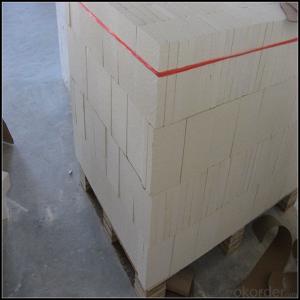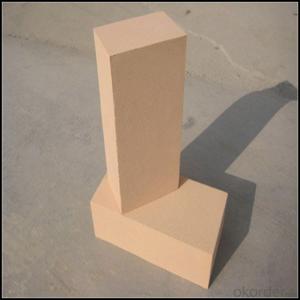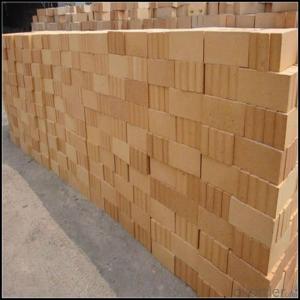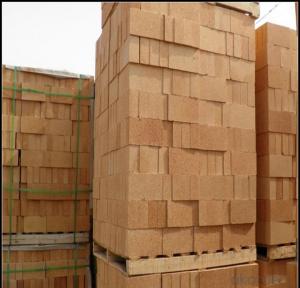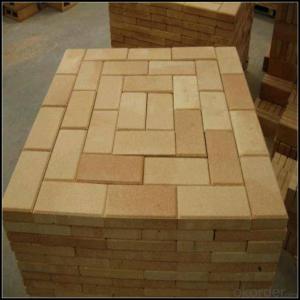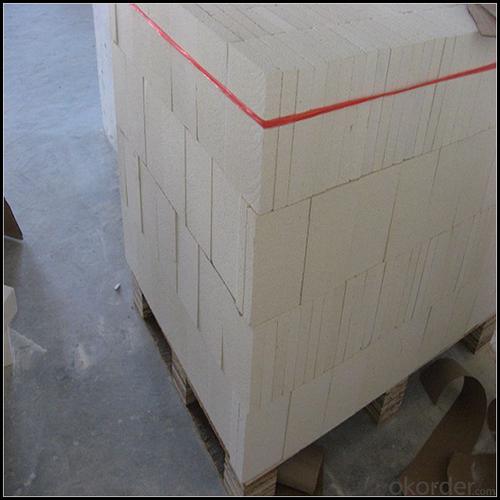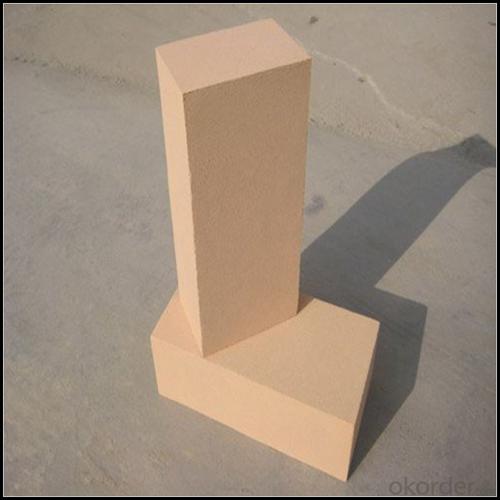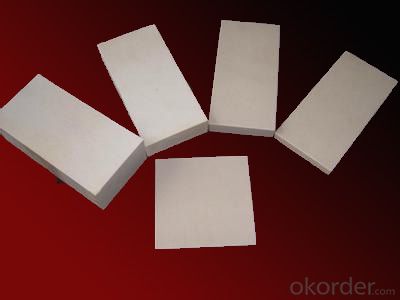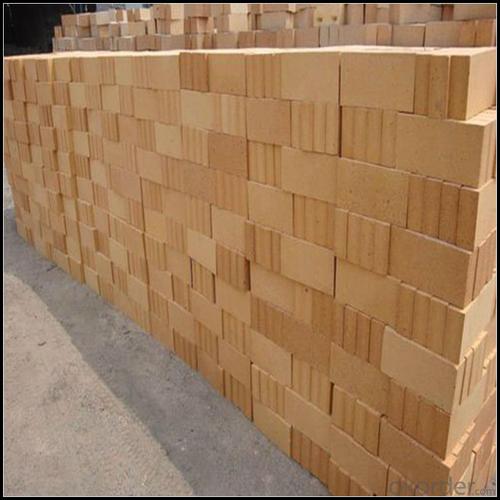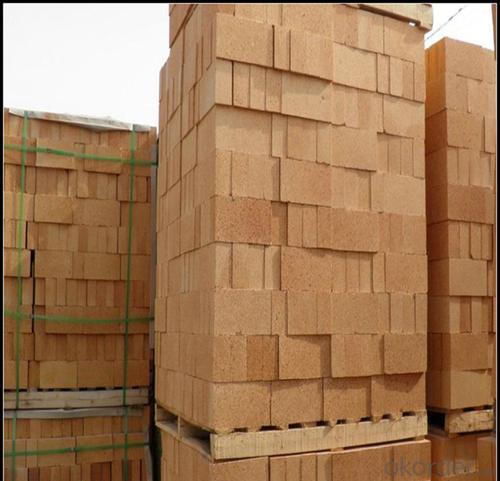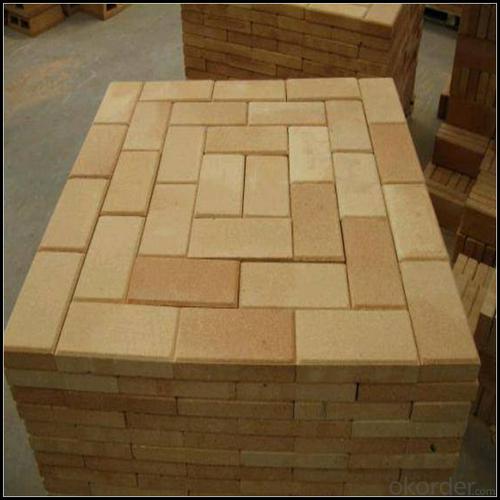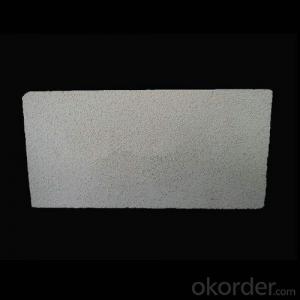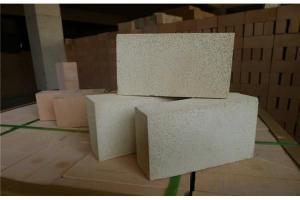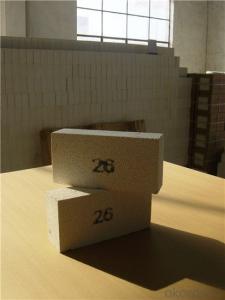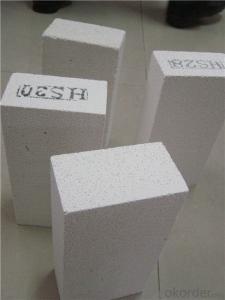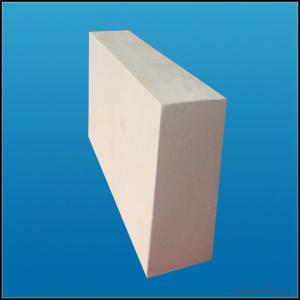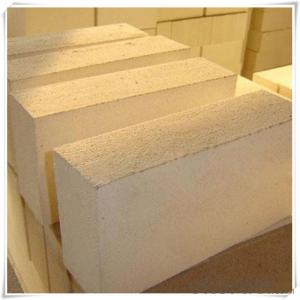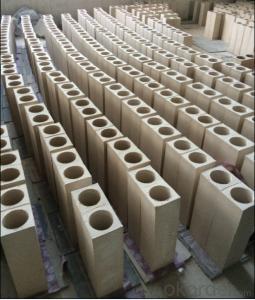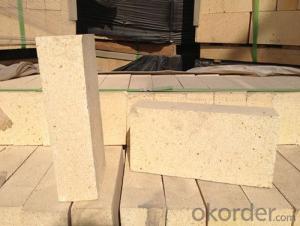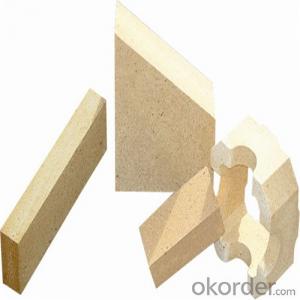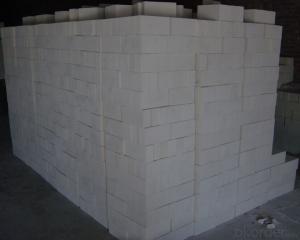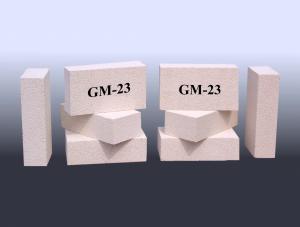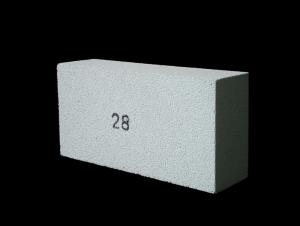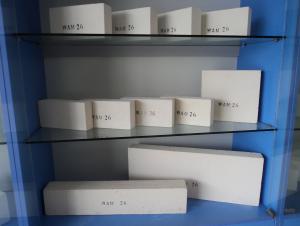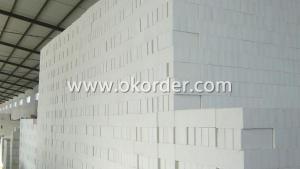SK32, SK34 Insulating Fireclay Refractory Brick for Kiln Use
- Loading Port:
- China main port
- Payment Terms:
- TT OR LC
- Min Order Qty:
- 1 m.t
- Supply Capability:
- 800 m.t/month
OKorder Service Pledge
OKorder Financial Service
You Might Also Like
Refractory Brick
CMAX firebricks are classified under temperature between 1300℃ to 1700℃, manufactured from high purity alumina clay by mixing, press-forming, drying, sintering and machining. Bricks contain carefully-graded organic fillers which are burned out during sintering to give a uniform controllable pore structure. This technique makes product feature low thermal conductivity and excellent heat insulation
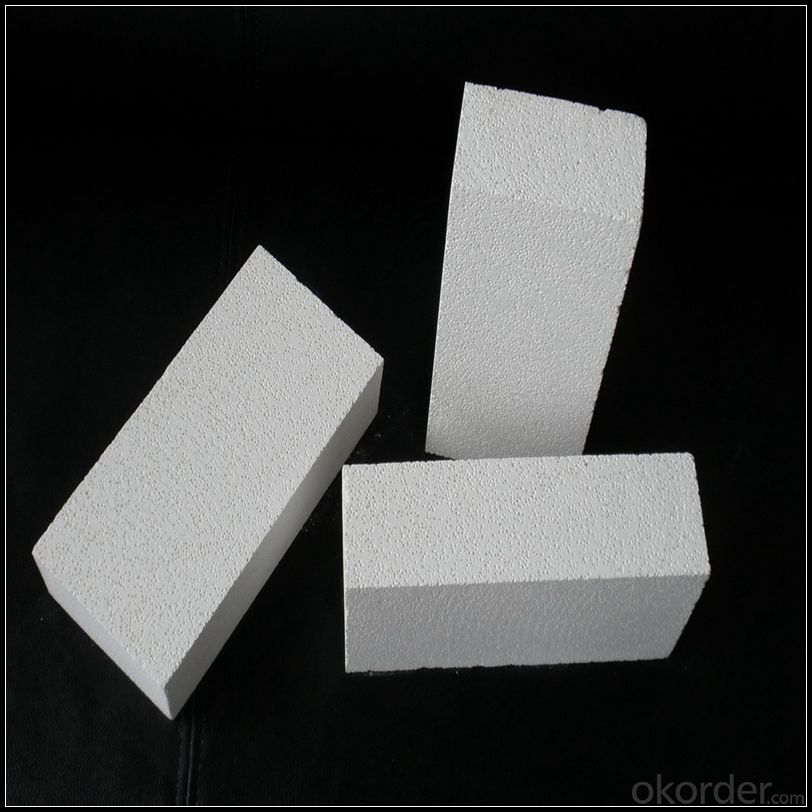
Features
1. Certificate of Quality for each parcel
2. Raw material from China, Australia and Germany
3. Good price
4. Many sizes in stock ; Making tiles accroding to your drawings
5. Resistance: Excellent
6. Quick delivery& Professional service
Application
1.Carbon bake furnaces in the aluminium industry
2.Preheat zones and cyclones of rotary cement kilns
3.Insulation for glass tanks
4.Coke ovens
5.Blast furnaces
6.Reheating furnaces
7.Suspended roofs
8.Lime kilns
9.chimney
Data Sheet
Classification Temperature (℉/℃) | 3000/1650 |
Bulk Density (g/cm3 ) | ≤1.0 |
Thermal Conductivity | |
800℃, W/m.K | ≤0.39 |
1000℃, W/m.K | ≤0.43 |
1200℃, W/m.K | ≤0.48 |
Reheating Linear Change (%) | 1550℃×12h |
≤0.9 | |
Chemical Composition (%) | |
Al2O3 | ≥75 |
Fe2O3 | ≤0.5 |
Packaging & Shipping
Packaging Details:Be packed in fumigated wooden pallets
Delivery Detail: 30 days after order

Our Services
Optimum solution and product supply of refractories for high temperature industries, such as iron steel, non-ferrous, petrochemical and building materials.
Engineering design, contract and consult for refractories, and civil architecture design.
Research, development, manufacture and sale of superhard materials.
R&D, manufacture and sale of special packing materials for export.
Inspection, supervision and arbitration of refractories.
Consultation and services in refractories information.
Training and cultivation of high-level talents in refractories profession
Sales Network

Company Information
CNBM (China National Building Material) Group is the largest comprehensive building materials group in China that in integrate scientific research, manufacturing and logistics into one entity. The largest building materials and equipment specialists in China. Upon State Council approval, today CNBM owned more than 300 subordinate manufacturing factories and servicing companies. There are 6 fully owned public listed companies and 11 partially owned with substantial shares public listed companies. In many of these fields, CNBM is playing the leading role in the building industry in the country.
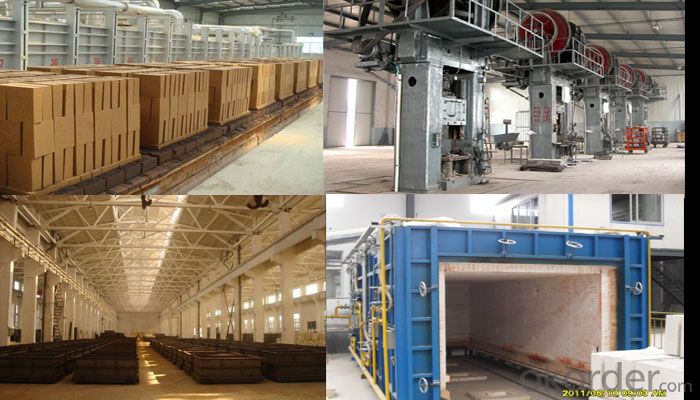
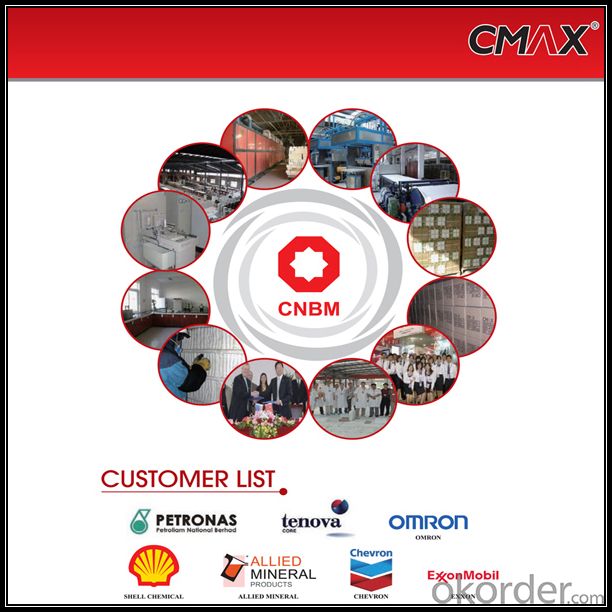
FAQ
1. Which products do you have?
We have all kinds of refractory brick, castable, mortar, cement, ceramic fiber products, etc.
Or you could browse our products to choose what you need.
2. Can you give me a brief introduction of the application of your products?
We are mainly specializing in the refractory materials in iron and steel, cement, glass, ceramics, petrochemical, electric power Industry, etc.
3. If I need your offer, what information do you need?
In order to choose suitable products, it will be appreciated to provide us the information, such us specification, technical data, order quantity, products application etc. If any question, please contact us freely.
- Q: Can insulating fire bricks be used for fireplace construction?
- Yes, insulating fire bricks can be used for fireplace construction. These bricks are designed to withstand high temperatures and provide excellent insulation, making them suitable for lining the inside of fireplaces to retain heat and improve energy efficiency.
- Q: Are insulating fire bricks resistant to moisture or water damage?
- Yes, insulating fire bricks are resistant to moisture or water damage. They are designed to withstand high temperatures and do not absorb water, making them a suitable choice for applications where moisture or water exposure is a concern.
- Q: How long do insulating fire bricks typically last?
- Insulating fire bricks, also known as IFBs, can last for several years depending on various factors such as the quality of the bricks, the conditions they are exposed to, and the level of maintenance they receive. Generally, well-made insulating fire bricks can last anywhere from 10 to 20 years or even longer with proper care. The longevity of insulating fire bricks is influenced by the temperature they are exposed to. IFBs are designed to withstand high temperatures, typically ranging from 2,000 to 3,200 degrees Fahrenheit (1,093 to 1,760 degrees Celsius). However, extreme and prolonged exposure to these high temperatures can gradually degrade and weaken the bricks, shortening their lifespan. Other factors that can affect the lifespan of insulating fire bricks include thermal cycling, chemical exposure, and mechanical stress. Repeated heating and cooling cycles can cause expansion and contraction, leading to cracks and eventual failure. Chemicals present in certain applications, such as acids or alkalis, can corrode the bricks over time. Additionally, excessive pressure or impact can cause the bricks to break or chip, reducing their effectiveness. Proper maintenance and care can significantly extend the lifespan of insulating fire bricks. Regular inspections should be conducted to identify any signs of wear, damage, or deterioration. Cracked or damaged bricks should be replaced promptly to prevent further issues. It is also crucial to clean the bricks regularly to remove any accumulated debris or residues that can potentially compromise their insulating properties. Ultimately, the lifespan of insulating fire bricks depends on a combination of factors and can vary in different applications. However, with careful selection, proper installation, and regular maintenance, insulating fire bricks can provide reliable insulation and longevity for many years.
- Q: Can insulating fire bricks be used in the construction of combustion chambers?
- Yes, insulating fire bricks can be used in the construction of combustion chambers. These bricks are designed to withstand high temperatures and provide excellent insulation, making them suitable for containing and directing heat in combustion processes.
- Q: Are insulating fire bricks suitable for use in oil refineries?
- Insulating fire bricks do not typically suffice in oil refineries due to their inability to withstand the corrosive and abrasive nature of oil and its byproducts, despite being designed for high temperatures. Oil refineries involve a complex process of refining crude oil into various petroleum products, which often exposes materials to harsh chemicals and high temperatures. Instead, refractory bricks or castables specifically tailored to endure the corrosive and abrasive conditions present in the refining process are commonly employed. These refractory materials possess chemical resistance, high strength, thermal shock resistance, and the ability to withstand the extreme temperatures encountered during refining. Moreover, oil refineries necessitate materials that offer excellent insulation properties while also being durable and resistant to thermal stress. While insulating fire bricks possess good insulation properties, they may not possess the necessary durability and resistance to thermal stress demanded in the demanding environment of an oil refinery. Hence, it is advisable to utilize refractory bricks or castables that are designed specifically for oil refineries. These materials can provide the requisite resistance against chemicals, high temperatures, and thermal stress, ensuring the refinery operates safely and efficiently.
- Q: Are insulating fire bricks suitable for insulation in cryogenic applications?
- Yes, insulating fire bricks are suitable for insulation in cryogenic applications. Insulating fire bricks have excellent thermal insulation properties, low thermal conductivity, and can withstand extremely low temperatures. This makes them ideal for use in cryogenic applications where insulation is required to maintain the low temperature of the system.
- Q: Can insulating fire bricks be used in ceramic fiber boards?
- Yes, insulating fire bricks can be used in ceramic fiber boards as they provide thermal insulation and enhance the overall insulation properties of the boards.
- Q: What is the exterior wall insulation material made of graphite?
- Graphite is polystyrene board, polyurethane graphite plate, from the point of view of building the acceptance specification in the use process, the core index of insulation material is the heat transfer coefficient and safety, by now a large number of glazed hollow bead slurry from the actual situation it seems difficult to ensure the quality of construction materials should be on site workers slurry mixing, finished product the quality gap made out of very large.
- Q: Can insulating fire bricks be used in a refractory lining?
- Yes, insulating fire bricks can be used in a refractory lining. Insulating fire bricks are specifically designed to provide thermal insulation and reduce heat loss in high-temperature applications. They have low thermal conductivity and high insulating properties, making them ideal for use in refractory linings. These bricks can help improve the energy efficiency of furnaces, kilns, and other industrial applications by reducing heat transfer to the surrounding environment. Additionally, insulating fire bricks are lightweight, easy to install, and have good strength and durability, making them a popular choice for refractory linings.
- Q: Can insulating fire bricks be used in aluminum furnaces?
- Indeed, aluminum furnaces can utilize insulating fire bricks. These bricks are specifically engineered to possess exceptional thermal insulation characteristics, rendering them ideal for deployment in high-temperature settings like aluminum furnaces. Their capacity to endure the intense heat generated during aluminum melting and their ability to preserve heat within the furnace contribute to enhanced energy efficiency. Moreover, insulating fire bricks offer additional benefits such as shielding against heat dissipation, mitigating the likelihood of overheating, and facilitating a more steady and regulated heating procedure.
Send your message to us
SK32, SK34 Insulating Fireclay Refractory Brick for Kiln Use
- Loading Port:
- China main port
- Payment Terms:
- TT OR LC
- Min Order Qty:
- 1 m.t
- Supply Capability:
- 800 m.t/month
OKorder Service Pledge
OKorder Financial Service
Similar products
Hot products
Hot Searches
Related keywords
